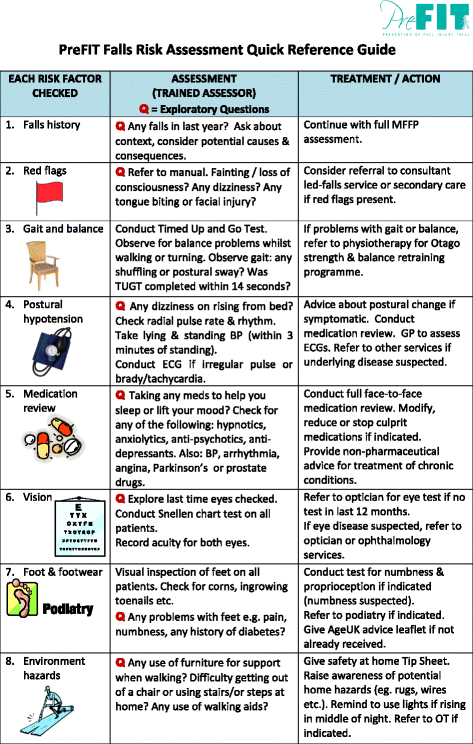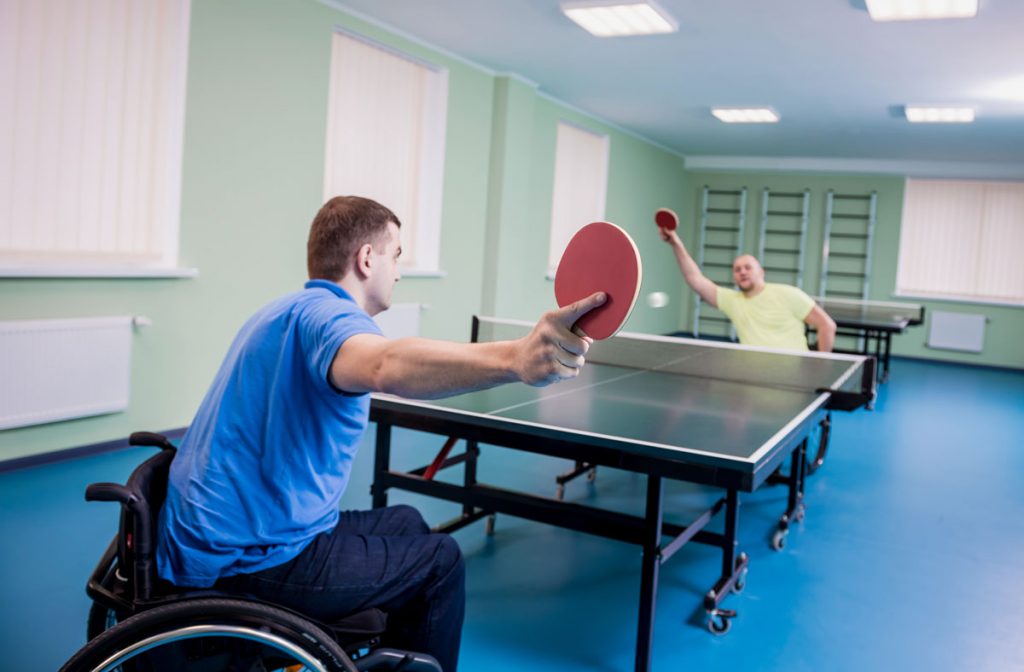Indicators on Dementia Fall Risk You Need To Know
The Facts About Dementia Fall Risk Revealed
Table of ContentsThe Dementia Fall Risk DiariesAll about Dementia Fall RiskDementia Fall Risk Things To Know Before You Get ThisThe Only Guide to Dementia Fall Risk
A loss danger analysis checks to see exactly how most likely it is that you will certainly drop. It is mainly provided for older adults. The evaluation generally consists of: This includes a series of inquiries about your overall health and wellness and if you've had previous drops or problems with equilibrium, standing, and/or strolling. These tools examine your toughness, balance, and gait (the means you walk).Interventions are referrals that may lower your danger of dropping. STEADI consists of 3 actions: you for your danger of falling for your danger aspects that can be enhanced to try to prevent falls (for instance, balance issues, damaged vision) to minimize your danger of dropping by using effective techniques (for example, giving education and sources), you may be asked several inquiries including: Have you dropped in the past year? Are you stressed about falling?
You'll sit down once again. Your provider will inspect just how long it takes you to do this. If it takes you 12 secs or more, it might suggest you go to greater threat for a loss. This test checks toughness and balance. You'll rest in a chair with your arms went across over your chest.
The settings will certainly obtain harder as you go. Stand with your feet side-by-side. Relocate one foot halfway forward, so the instep is touching the big toe of your various other foot. Relocate one foot completely in front of the various other, so the toes are touching the heel of your various other foot.
Excitement About Dementia Fall Risk
The majority of drops happen as a result of several adding aspects; for that reason, handling the danger of falling begins with determining the factors that contribute to drop risk - Dementia Fall Risk. A few of one of the most relevant danger aspects consist of: History of prior fallsChronic clinical conditionsAcute illnessImpaired stride and balance, lower extremity weaknessCognitive impairmentChanges in visionCertain high-risk medications and polypharmacyEnvironmental elements can also boost the risk for falls, consisting of: Inadequate lightingUneven or harmed flooringWet or unsafe floorsMissing or damaged handrails and get barsDamaged or incorrectly equipped tools, such as beds, mobility devices, or walkersImproper use assistive devicesInadequate supervision of the individuals residing in the NF, including those who display aggressive behaviorsA effective loss threat monitoring program needs a comprehensive scientific assessment, with input from all participants of the interdisciplinary group

The treatment plan ought to additionally consist of interventions that are system-based, such as those that promote a risk-free atmosphere (ideal lighting, handrails, grab bars, etc). The performance of the treatments should be reviewed periodically, and the care plan revised as required to mirror adjustments in the fall risk assessment. Applying a loss threat monitoring system using evidence-based best method can decrease the occurrence of drops in the NF, while restricting the capacity for fall-related injuries.
What Does Dementia Fall Risk Do?
The AGS/BGS guideline advises Check This Out screening all adults matured 65 years and older for fall danger each year. This screening includes asking people whether they have actually fallen 2 or even more times in the past year or sought clinical focus for an autumn, or, if they have not fallen, whether they feel unstable when strolling.
People who have actually fallen when without injury must have their equilibrium and stride reviewed; those with stride or equilibrium problems must receive additional assessment. A history of 1 fall without injury and without stride or equilibrium issues does not call for more analysis past ongoing annual autumn threat Your Domain Name testing. Dementia Fall Risk. An autumn risk assessment is required as part of the Welcome to Medicare exam

The Only Guide to Dementia Fall Risk
Recording a falls history is one of the high quality signs for fall avoidance and monitoring. An important part of threat evaluation is a medicine review. A number of classes of drugs enhance autumn risk (Table 2). copyright medicines specifically are independent predictors of falls. These medications have a tendency to be sedating, alter the sensorium, and impair equilibrium and gait.
Postural hypotension can usually be minimized by decreasing the dosage of blood link pressurelowering medications and/or stopping medications that have orthostatic hypotension as a negative effects. Use of above-the-knee assistance tube and resting with the head of the bed elevated may also lower postural reductions in blood pressure. The recommended elements of a fall-focused physical examination are shown in Box 1.

A TUG time higher than or equal to 12 secs suggests high loss risk. Being incapable to stand up from a chair of knee elevation without utilizing one's arms suggests boosted autumn threat.